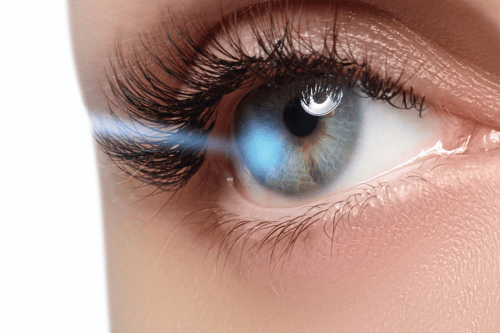EMDR for Insomnia: Restoring Restful Sleep Through Trauma Processing
Understanding Insomnia
Insomnia involves difficulty falling asleep, staying asleep, or waking too early. It disrupts sleep continuity and reduces overall sleep time. People with insomnia often report daytime fatigue and low concentration.
Chronic insomnia may signal deeper issues such as anxiety disorders or post-traumatic stress disorder. Disturbed sleep can also stem from emotional memories that replay at night. Many experience sleep alterations that continue long after the stressor is gone.
Common Causes of Insomnia
Stress, trauma, psychiatric disorders, and chronic pain are leading causes. Events among veterans, survivors of assault, and those with panic disorder show how trauma links to sleep issues. Cognitive-behavioral therapy is often the first step in identifying root causes.
Environmental triggers like light or noise can worsen sleep latency. Biological factors, such as amygdala activation, contribute to irregular sleep patterns. Emotional distress often leads to fragmented, non-restorative sleep.
Impact on Daily Life and Health
Sleep disruptions increase irritability and anxiety levels. Over time, poor sleep impacts physical health and immune function. Lack of restorative sleep also impairs emotional regulation.
Studies like those from the American Sleep Disorders Association link insomnia to long-term effects on cognition and mood. Chronic post-traumatic stress disorder is often accompanied by sleep in mice and humans showing fragmented transitions from REM sleep. This supports the link between trauma and insomnia.
Overview of EMDR Therapy
EMDR stands for Eye Movement Desensitization and Reprocessing. It was introduced by Shapiro F. as a therapy for trauma and related symptoms. Today, it is used for a wide range of mental disorders.
Unlike talk therapy, EMDR uses bilateral stimulation—often through rapid eye movement or auditory stimuli. These movements help the brain reprocess distressing memories. EMDR has been studied in populations with anxiety disorders, PTSD, and even sleep disturbances.
Origin and Development of EMDR
Shapiro F. discovered that eye movements reduced the emotional impact of traumatic memories. Her early work evolved into a structured, eight-phase protocol. EMDR is now an evidence-based cognitive behavior therapy.
Key contributors include Silver S. M., Cohen H., and Lauretti G., who explored EMDR’s use in elderly war veterans and combat-related posttraumatic stress disorder. Controlled study findings show that EMDR reduces posttraumatic stress symptoms and related sleep issues.
Core Principles and Techniques
The goal of EMDR is to process traumatic reminders and shift them from emotionally charged to neutral. This often reduces the secondary symptoms of insomnia. Clients are asked to recall the memory while tracking eye movements.
This activates the brain’s natural healing systems. Research from the Brain Research Institute highlights changes in amygdala resting-state functional connectivity. Such changes may influence sleep efficiency and sleep latency.
Mechanism of Bilateral Stimulation
Bilateral stimulation mimics REM sleep, the phase associated with memory processing. Eye Movements, tapping, or sounds are used to create this effect. During this phase, emotional and episodic memory integration occurs.
The act of reprocessing memory reduces physiological stress. Studies, including those published in Brain Res and J. Trauma, show improved sleep after EMDR sessions. Clients often report more consolidated sleep and less wake after sleep onset (WASO).
The Connection Between Trauma and Insomnia
Trauma can alter brain function and change sleep structure. Events such as combat, assault, or accidents often lead to fear-based memories. These memories can trigger nighttime hyperarousal.
Traumatic memories can extend sleep latency and decrease REM density. Findings from Woodward S. H. and Bremner J. D. show that trauma causes fragmented eye movement sleep changes. Chronic nightmares are common among those with PTSD and anxiety before treatment.
How Trauma Affects Sleep Patterns
Trauma disrupts transitions from REM sleep, impairing the consolidation of fear memories. The fear system stays active, creating disturbed sleep. Individuals may wake up at the same time each night due to subconscious emotional triggers.
Cochrane Database Syst and Acta Psychiatr publications suggest that trauma survivors have irregular sleep patterns and reduced sleep continuity. These disruptions may persist unless trauma is addressed directly.
EMDR as an Intervention for Trauma-Linked Insomnia
EMDR reduces the emotional charge of traumatic events. When trauma is processed, clients often experience longer, deeper sleep. EMDR serves as a therapy for insomnia when other cognitive-behavioral treatments fail.
A previous study published in J. Neuropsychiatry Clin showed that EMDR improved sleep quality in patients with chronic PTSD. Sleep parameters improved, and patients reported fewer nightmares. This shows EMDR’s role in treating sleep disorders caused by trauma.
EMDR Protocols for Insomnia
Customized EMDR Protocols for Individuals
EMDR can be adapted for those with chronic sleep issues. Therapists often develop sleep-specific targets using sleep diaries. The goal is to address the root trauma, not just the symptom.
Templates may differ depending on the type of trauma. For example, a protocol for rape victims may differ from that used for elderly war veterans. Evaluation study results support this individualized method.
Integrating Sleep Hygiene Practices
Sleep hygiene includes avoiding screens before bed, maintaining a schedule, and reducing caffeine. These strategies complement EMDR. Incorporating both improves sleep continuity and efficiency.
Combined approaches reduce anxiety levels and make EMDR sessions more effective. At Treat MH Tennessee, we integrate EMDR with practical sleep hygiene routines.
Benefits of Using EMDR for Insomnia
Improved Sleep Quality
EMDR helps reprocess distressing memories, leading to restful sleep. Clients report fewer sleep disruptions and longer periods of consolidated sleep. Sleep efficiency improves as fear-based arousals decrease.
Emotional Regulation and Stress Reduction
Lower stress results in better regulation of sleep-wake cycles. Emotional memory processing also reduces triggers that cause nighttime awakenings. This supports restorative sleep and improved mental health.
Potential Side Effects and Considerations
Managing Post-Session Insomnia and Nightmares
Some clients may experience increased nightmares after early EMDR sessions. This often occurs during memory reactivation. It’s a sign the brain is beginning to reprocess.
Practitioners at Treat MH Tennessee monitor such reactions closely. Adjustments in the protocol can reduce these temporary disturbances.
Strategies for Minimizing Negative Reactions
Journaling, mindfulness, and grounding exercises can help. Clients are also encouraged to follow a routine and avoid stimulating activities before bed. Using calming auditory stimuli may support smoother recovery.
Integrating EMDR with Other Therapies
Complementary Therapies for Enhanced Outcomes
Cognitive-behavior therapy and dynamic therapy can boost EMDR outcomes. These methods offer coping tools that aid between sessions. Combining therapies improves resilience and sleep continuity.
Community-based polysomnographic study results show better outcomes when EMDR is part of a broader treatment plan. At Treat MH Tennessee, we combine EMDR with individual therapy and medication support if needed.
The Role of Lifestyle Adjustments
Clients are advised to manage caffeine, alcohol, and screen time. Physical activity and relaxation practices like yoga may enhance therapy. These habits support better sleep and overall well-being.
Monitoring and Evaluating Progress
Tracking Sleep Patterns and WASO
Progress is tracked using sleep journals and objective sleep parameters. Clients record total sleep time, latency, and WASO. These metrics help guide therapy sessions.
Data from clinical sources like J. Psychiatr and J. Clin show that consistent monitoring leads to better treatment outcomes. At Treat MH Tennessee, we use these tools to adapt therapy in real-time.
Assessing Psychological Improvements
Beyond sleep, therapists evaluate reductions in anxiety, panic, and depression symptoms. These are often secondary symptoms of unresolved trauma. Tracking both sleep and mental health offers a complete view of healing.
Broader Applications of EMDR Beyond Insomnia
EMDR for Anxiety and Depression
EMDR helps reduce anxiety levels and depression symptoms linked to past trauma. It addresses the root cause rather than masking symptoms. This makes it a powerful option for many clients at Treat MH Tennessee.
EMDR in Treating Stress-Related Disorders
Chronic stress impacts both mood and sleep. EMDR has shown success in treating psychiatric disorders related to high stress. These include panic disorder, combat-related posttraumatic stress disorder, and more.
Conclusion: Empowering Change with EMDR
Insomnia often hides deeper emotional wounds. EMDR helps by reducing the impact of traumatic memories on sleep. With improved emotional regulation, restful sleep becomes possible.
At Treat MH Tennessee, we offer EMDR for those struggling with trauma-linked sleep issues. Through personalized treatment and tracking, we help restore sleep patterns and quality of life.
If you’re experiencing persistent insomnia tied to past trauma, EMDR might be your next step toward restorative sleep.
FAQ's
Most people begin noticing changes after 3–6 sessions, but full results may take longer depending on trauma history and sleep severity.
Yes, many therapists offer EMDR via telehealth using tools like visual or audio bilateral stimulation, though results may vary.
Coverage depends on your provider and diagnosis. Many plans cover EMDR when linked to conditions like PTSD or anxiety.
Yes, EMDR is safe for children and teens, especially if their sleep disruptions stem from trauma or emotional stressors.










